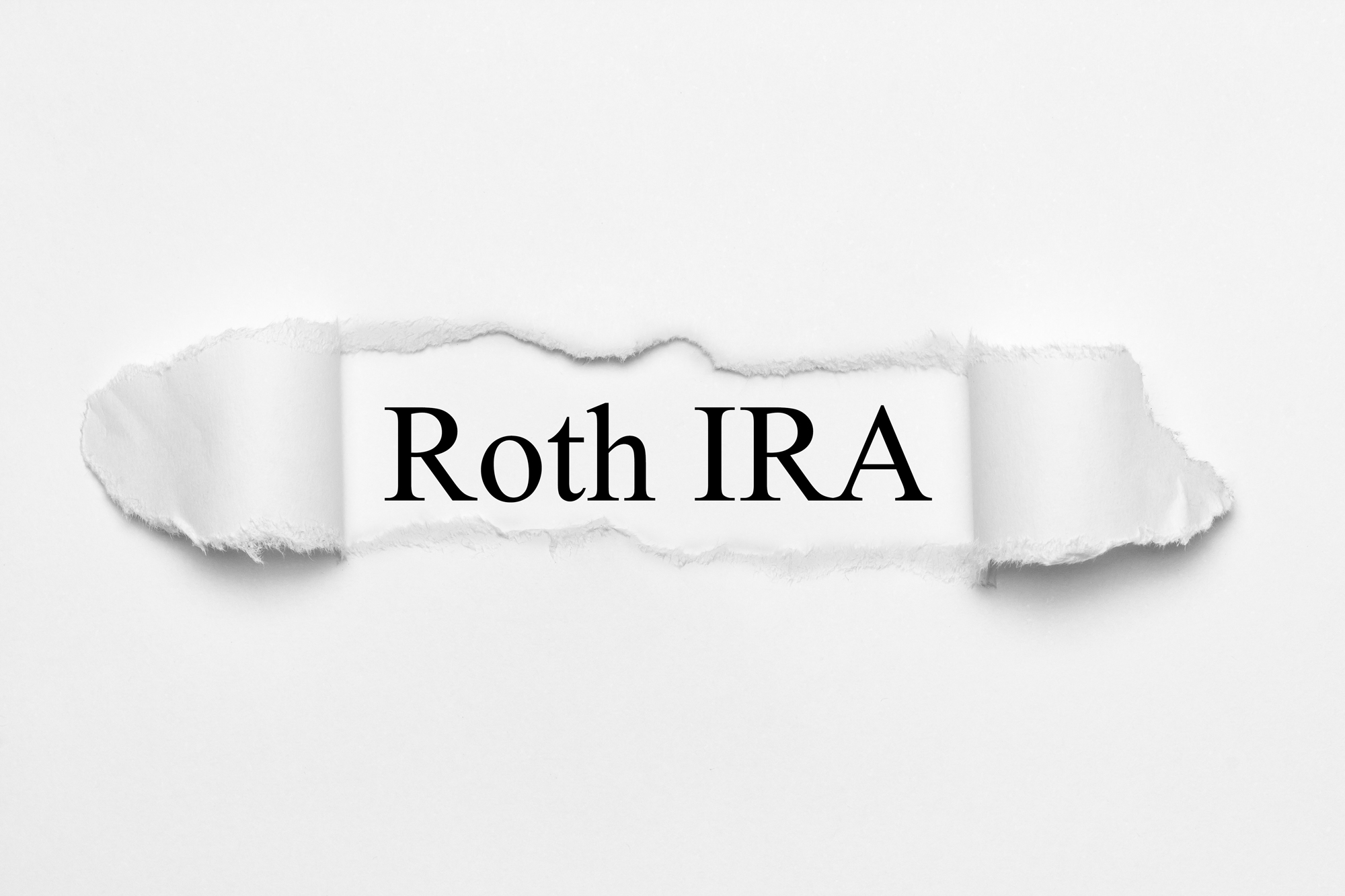Roth IRAs are tax-advantaged retirement accounts that provide significant tax benefits, such as tax-free growth on your investments.
Our partners provide many, if not all, of the products listed on this page in exchange for compensation. This may impact the goods we write about, as well as where and how they appear on a page. This, however, has no bearing on our judgments. Our viewpoints are entirely our own. Here’s a list of our affiliates, as well as how we generate money.
This page’s investment information is offered solely for educational purposes. Take Point Wealth does not provide advisory or brokerage services, nor does it suggest or advise investors on which stocks or assets to purchase or sell.
What is a Roth IRA?
A Roth IRA is an individual retirement account that earns and distributes income tax-free. The contribution maximum for 2021 is $6,000 ($7,000 if 50 or older) for modified adjusted gross incomes of less than $140,000 (single taxpayers) or $208,000 (married filers) (married filing jointly). Individuals aged 5912 years or older who have held accounts for at least five years are not required to pay federal income taxes on withdrawals.
In 2020, the contribution maximum was increased to $6,000 ($7,000 if 50 or older) for individuals with modified adjusted gross incomes of less than $139,000 (single filers) or $206,000 (married couples filing jointly) (married filing jointly).
How a Roth IRA works
A Roth IRA is a type of individual retirement account in which funds grow tax-deferred, and withdrawals are tax-free upon retirement. The following are the five most distinguishing qualities of a Roth IRA.
- You are taxed on the funds you deposit in the account. Contributions are not tax-deductible.
- You can donate up to $6,000 ($7,000 if you’re 50 or older) in 2020 and 2021.
- If your modified adjusted gross income was more significant than $139,000 in 2020 (single filers) or $206,000 in 2020 (married filers), you could not contribute to a Roth IRA (married filing jointly). In 2021, the MAGI threshold will be $140,000 for single taxpayers and $208,000 for joint filers (married filing jointly). (The backdoor Roth method circumvents these restrictions.)
- Individuals who are at least 5912 years old and have held their accounts for at least five years are eligible to receive distributions, including earnings, tax-free.
- You are not required to withdraw funds from your Roth IRA if you do not choose to. There are no required minimum distributions (RMDs).
Who can open a Roth IRA?
You must have earned income to start a Roth IRA, and your income cannot exceed specified limits. The following are the fundamental rules and prerequisites.
It would help if you were below the income threshold. To contribute to a Roth IRA, your modified adjusted gross income must be less than $139,000 (single filers) or $206,000 (married couples filing jointly) (married filing jointly). In 2021, the MAGI threshold will be $140,000 for single taxpayers and $208,000 for joint filers (married filing jointly). (For comprehensive instructions on calculating MAGI for Roth IRAs, see IRS Publication 590-A, Worksheet 2-1.)
You must have a source of money. You must earn money through a job (the IRS term is “taxable compensation”). The annual maximum contribution to a Roth is equal to your earned income or $6,000 ($7,000 if you’re 50 or older), whichever is less.
Here’s how to open a Roth IRA
You establish a Roth IRA with a brokerage firm or bank. After that, you invest the funds. You can invest in various products, including mutual funds, stocks, bonds, exchange-traded funds (ETFs), and bank savings products. If you intend to invest in stocks and bonds, you may wish to open your Roth account through a brokerage or Robo-advisor rather than a bank. (For additional information on investing in your IRA, click here.)
You can accumulate funds over time. A lump sum or periodic contributions are acceptable as long as they do not exceed $6,000 ($7,000 if you are 50 or older) or your taxable compensation, whichever is less. Additionally, you can contribute to a Roth account by rolling over funds from another retirement account.
Roth IRAs are offered by the majority of online brokers, banks, and Robo-advisors. Here is how they are dissimilar.
- Financial institutions. Because most banks offer savings products (such as certificates of deposit) rather than investments, they are typically not the best place to open an IRA, which should be geared toward long-term growth.
- Automated advisors. If you want to invest in a hands-off manner, a Robo-advisor and its automated investment process may appeal to you.
- Brokers in the conventional sense. These provide a more proactive approach to investment selection.
Roth IRA withdrawals and distributions
This is essentially how Roth IRA distributions work.
- You may withdraw your initial contributions at any time without incurring any penalties or taxes, regardless of the length of time your account has been open. This is because the funds you contribute are funds on which you have already paid income tax.
- When you make a withdrawal from a Roth IRA, the IRS always presumes that your initial contributions are deducted first.
- Qualified withdrawals from the account of investment earnings are tax-free. However, the IRS may claim a portion of those returns in the form of taxes and a possible penalty if you withdraw early or otherwise do not comply with the qualified withdrawal rules.
- Individuals who are at least 59.5 years old and have held their accounts for at least five years are eligible to receive distributions, including earnings, tax-free.
Advantages and benefits of Roth IRAs
- Tax savings that may be possible. If you anticipate your tax rate increasing in the future, Roth IRAs may be worthwhile because you contribute money now that will be taxed this year rather than later when your tax rate increases. If your tax rate is lower now, paying taxes now in exchange for tax-free retirement withdrawals makes sense.
- Withdrawals are simple. You may withdraw the funds you contributed at any time, tax-free and penalty-free. (Withdrawing investment earnings may result in taxation or penalty.)
- Duplicate dipping. Additionally to a 401(k), you can contribute to a Roth (k).
- Timing is adaptable. You have complete control over when and how much money you contribute to a Roth IRA. For instance, you could contribute $6,000 on the first day of the year or over several months.
- Contribute additional time. Contributions for the previous calendar year are due until the tax deadline.
- Distributions are tax-free. Once you reach the age of 5912 and have held the account for at least five years, you can withdraw funds from a Roth IRA, including earnings, without paying federal taxes.
- There is no upper age limit for admission. At any age, as long as you have earned income (you cannot contribute more than your earned income), you can open a Roth IRA.
- There are no RMDs. Roth IRAs are not subject to the required minimum distributions required from a traditional IRA or 401(k) beginning at age 72 (in 2019 and previous years, the required minimum distribution age was 7012).
The downside of a Roth IRA
While a Roth IRA has numerous advantages, nothing is perfect. Consider the following disadvantages:
- You cannot borrow from an IRA in the same way you may with many 401(k)s. You may withdraw your Roth IRA contributions at any time without incurring a penalty, interest, or tax liability.
- Unless you meet one of a few conditions, early withdrawals (before age 5912) of your investment gains are subject to a 10{e1706a52c3b3138427a8e72931d9d59b6d08ac610477d60aad46d317c02b8d31} penalty.
Roth IRA vs. traditional IRA
Consider a regular IRA if you’re looking for a quick tax break. If you enjoy the notion of tax-free retirement income, a Roth IRA is a terrific option.
Roth IRAs are an excellent savings vehicle for young professionals just starting, as they are likely to face higher income tax rates as their careers progress. A person who is further along their work path may also prefer a Roth IRA, which provides tax-free income in retirement. This results in what some financial planners refer to as “tax diversification.”
Money held in retirement accounts such as 401(k)s and regular IRAs results in tax liabilities. A Roth IRA may provide a straightforward approach to manage that tax cost; for example, by withdrawing income from the Roth to avoid being pushed into a higher tax band.





